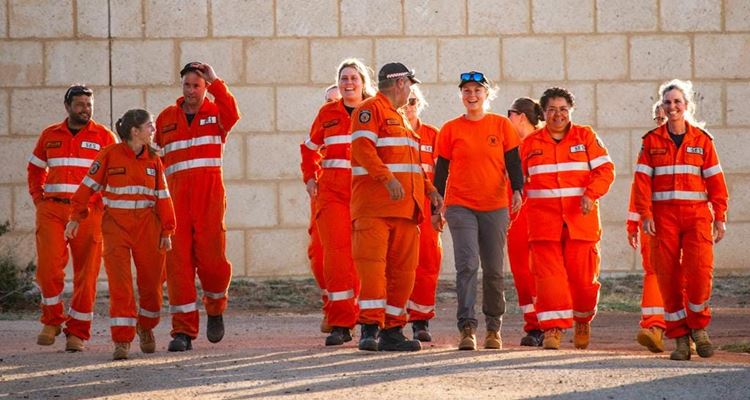Communities urged to get ready for northern wet season

Western Australians in the State’s north are being urged by the Department of Fire and Emergency Services (DFES) and Bureau of Meteorology to take advantage of current conditions and prepare for the upcoming wet season, given it only takes one powerful system to bring significant impacts.
November to April is the peak time for severe weather including tropical cyclones, floods and severe storms.
While information from the Bureau indicates close to average rainfall, warmer ocean surface temperatures across northern Australia suggest there may be enhanced tropical weather activity.
The intensity of tropical weather over coming months can be unpredictable, regardless of how active or inactive a season may be.
The coastline between Exmouth and Broome is one of the most cyclone-prone areas in Australia, with an average of four to five tropical cyclones near WA each season.
Tropical cyclones or tropical lows can bring dangerous weather including strong winds, heavy rainfall, flooding and storm surge that put lives and homes at risk.
Last wet season, Severe Tropical Cyclone Zelia became a Category 5 system off the Pilbara, before crossing the coast on February 14 as a high-end Category 4 system near the De Grey River mouth, with Port Hedland enduring damaging winds for several hours.
As it moved inland, torrential rain caused major flooding of the De Grey River and cut off part of the Great Northern Highway, isolating Pilbara and Kimberley communities for an extended period and prompting evacuations from remote communities Warralong and Gooda Binya.
DFES Deputy Commissioner Operations Craig Waters AFSM said the best defence was being prepared with a well-maintained property, understanding of the cyclone warning system and emergency kit.
“Do not let complacency cost you – remember it only takes one strong system to have a devastating impact on you and your family,” he said.
“That means checking if structures have been maintained to cyclone standards, tidying up around your property and securing any loose items that could become projectiles in strong winds like outdoor furniture, trampolines, dead branches and loose fencing.
These actions which will also help protect neighbouring properties.
“You can visit the DFES website for guidance on developing a cyclone plan or preparing an emergency kit with essential items if you need to evacuate, lose power or get cut off from supplies.
“When a cyclone is expected to form, the Emergency WA app and website have time-critical information about how to stay safe including updates from the Bureau of Meteorology, and you can set up multiple watch zones in the app now to be notified of alerts and warnings.
“Anyone new to the region and people planning to travel to those areas are also reminded to get familiar with the cyclone warning system. They should visit Emergency WA for information when a cyclone is approaching.”
Bureau of Meteorology's WA manager James Ashley said the impacts of tropical cyclones during the last wet season were a reminder to be prepared for severe weather.
"There were 11 tropical cyclones in the western tropical cyclone region over the 2024-25 season, with two making landfall in Western Australia at tropical cyclone intensity," Mr Ashley said.
"Another tropical cyclone skirted the Pilbara coast while a fourth weakened to a tropical low before moving over the Kimberley.
"Despite their differing intensities, these systems all brought strong winds, heavy rainfall and flooding to communities in the State's north.
"These events are a reminder for residents to be prepared for a variety of severe weather impacts over the next six months."
More information:
• Alerts and Warnings: emergency.wa.gov.au
• Tropical cyclone warnings and information: bom.gov.au/cyclone
• National Tropical Cyclone Outlook: bom.gov.au/climate/cyclones/australia
• WA rainfall and river conditions: bom.gov.au/wa/flood
• Preparing for cyclones: dfes.wa.gov.au/cyclone
• Tropical Cyclone Knowledge Centre: bom.gov.au/cyclone/tropical-cyclone-knowledge-centre/
Stay up to date with the Bureau's latest forecasts and warnings on their website and the BOM Weather app. You can set notifications and your location on the app.
Learn more about severe weather – visit beta.bom.gov.au/resources/know-your-weather-know-your-risk
Media Contacts:
DFES Media and Corporate Communications (08) 9395 9543
Bureau of Meteorology Media (03) 9669 4057

